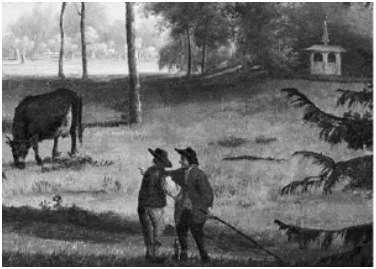Sporen van een tuinpiramide

Laser altimetry technology reveals the location of what is most probably the footprint of a lost garden pyramid in The Netherlands. It seems to be several meters north from the location indicated on maps from the 1780’s, but it may have been moved towards the bank of the pond after that was created in 1792.
Until further on-site research is done, the idea that this shape is merely the result of an anomaly in the picture, can not be completely ruled out, though.
Laser altimetry technology reveals the location of what is most probably the footprint of a lost garden pyramid in The Netherlands. It seems to be several meters north from the location indicated on maps from the 1780’s, but it may have been moved towards the bank of the pond after that was created in 1792.
Until further on-site research is done, the idea that this shape is merely the result of an anomaly in the picture, can not be completely ruled out, though.



